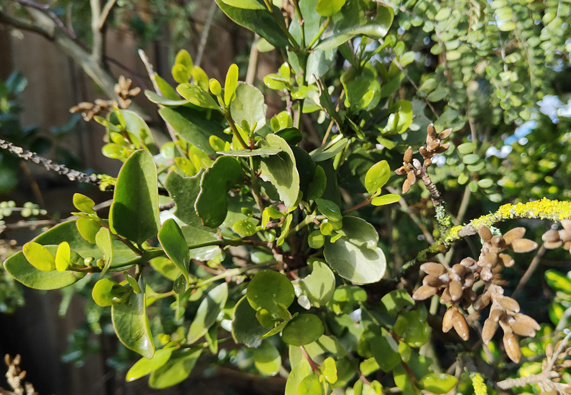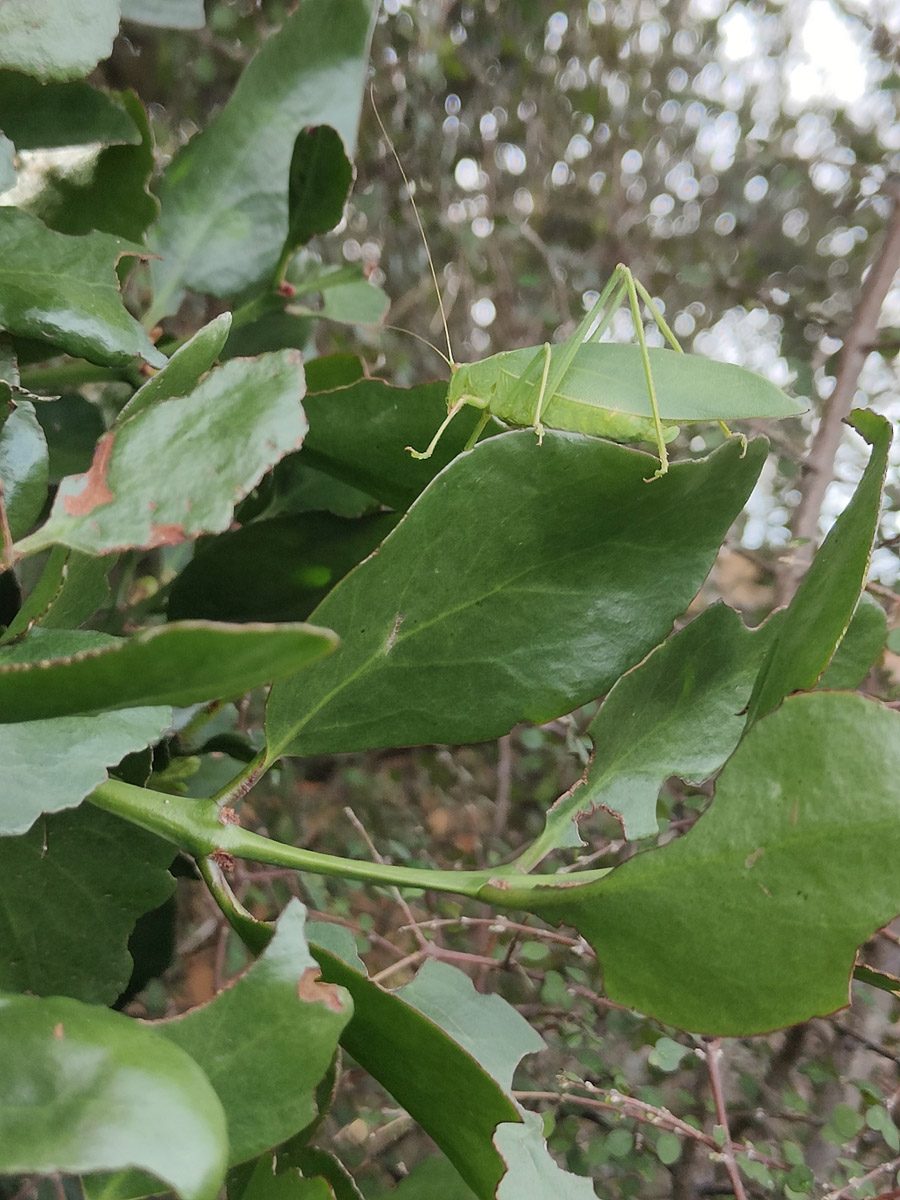Follow
the podcast on


A few weeks ago, after that yucky and cold spell in the middle of winter, I was checking my mistletoe to see how it had been coping under those chilly and frosty conditions.
Looked okay, but there were a few bite marks on the leaves. Hmmm… nothing worrying about though.
Ileostylus micranthus is the green mistletoe I “planted” on my kowhai bush a few years ago now.
The sticky seeds should be adhered to the twigs of the host plant and with a bit of luck the mistletoe will settle itself on that host plant by sending its “roots” (haustoria) into the host plant. The Mistletoe can then draw its nutrients from the host.
That makes it a “parasite”.
Under normal circumstances, the sticky seeds are “planted” by birds. They simply try to eat the seeds but often end up wiping their bill clean on the host plant.
Clever plant!
My neighbour across the road also has a green mistletoe, but his specimen is situated on a Coprosma virescens bush known by its Māori name as “Mingimingi”. A gorgeous native shrub with a divaricating growth; tangled branches of orange colours and rather small leaflets.
I decided to see how his green mistletoe was doing after the very cold nights.
The leaves were chewed significantly – huge chunks eaten out of the edges. The last time I saw that plant it was in great condition, but this winter something or somebody must have had a real go at it.
A thorough investigation revealed the culprit: an adult Katydid was hiding in the tangled branches of the Mingimingi, sitting very still and using its green camouflage.
This in itself is quite a weird phenomenon, as I usually see Katydids in summer and autumn but not in winter.
This native chewer-of-leaves must have found enough shelter inside the Mingimingi to survive the winter conditions and chew away at the parasitic Mistletoe!
 A Vandal Katydid on a Green Mistletoe on a Mingimingi.
A Vandal Katydid on a Green Mistletoe on a Mingimingi.
LISTEN ABOVE
Take your Radio, Podcasts and Music with you







